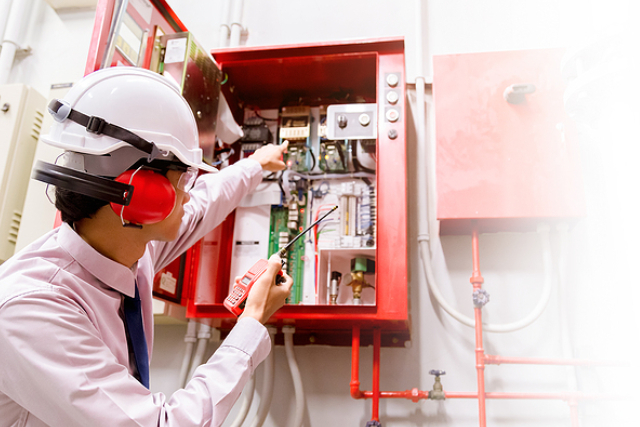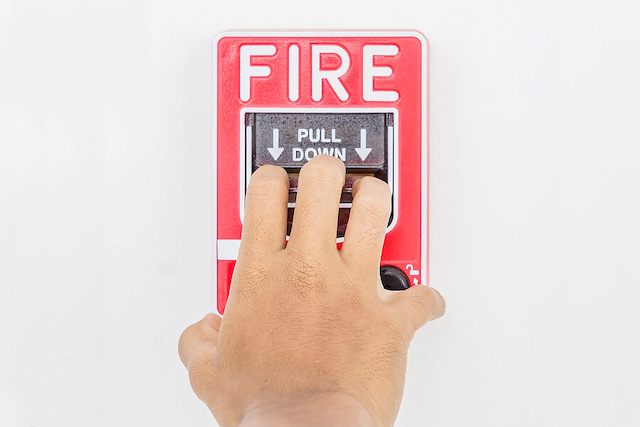A building’s fire suppression system is its strongest defence against a growing fire outbreak. As such, building owners and fire safety managers cannot afford to have it non-operational, no matter what. One of the leading causes of fire suppression systems malfunctioning or being outright ineffective is improper or irregular inspections. Hence, a comprehensive inspection routine is indispensable to keeping property and people safe.
To ensure that the sprinkler systems and related parts work as intended when the need arises, they must be inspected on a scheduled basis and if they ever show signs of wear. Below, we outline the necessary inspection scheduling for a fire suppression system and the tell-tale signs it needs further inspection outside the established schedule.
Scheduling a Fire Suppression System Inspection Routine
Fire suppression systems are comprised of many different and intricate parts, including pipes, gauges, switches, and more. Every part needs its separate inspection schedule to ensure they remain in proper working order when a fire occurs. The recommended inspection schedules for each of these parts are outlined as follows:
Weekly
The gauges on sprinkler systems provide key information about the remaining pressure flowing through the system. They need to be inspected in dry, deluge, and pre-action systems ideally once a week to ensure they are in proper working condition.
Monthly
But when it comes to the sprinkler system’s wet pipe gauges, monthly inspections will more than suffice.
Quarterly
It is essential to conduct detailed inspections on the control valves, hydraulic nameplates, valve alarm devices, water flow alarm devices, signal devices, and fire department connections once every three months.
Annually
Each year, the system’s signage, hangar and seismic bracing, fittings, pipework, and sprinklers must undergo inspection.
Every Five Years
Every five years, it is imperative to inspect the suppression and sprinkler system’s internal pipework to make sure it is free of blockages.
The Key Signs That a Suppression System Needs Inspection
Apart from the regularly scheduled inspection routine covered above, there may also be cases when a system needs further servicing. If any of the following indicators are identified in a fire sprinkler system, it must be inspected right away.
1. Rust
Metal parts in your fire suppression system are liable to rust or corrode sooner or later and may result in leaks or improper functioning during a fire. As such, if you see or smell the presence of rust, it is time for an emergency inspection.
2. Head and pipe damage
Physical damage in a fire suppression system can occur in various ways, typically in the head pipe or other piping components. If there is visible damage to these parts, they may cause improper water flow and other kinds of malfunctions.
3. Leaks
Leaks in any part of the system are a cause for immediate inspection. This is because any form of leaking, big or small, eventually causes property and equipment damage as well as prevents the system from triggering correctly during a fire.
4. System age
If a fire suppression system is dated, it may need more frequent inspections than normal. Although issues may not be readily visible on these systems’ components, their older materials may have internal defects or use obsolete parts that are no longer suited for today’s fire prevention standards.
5. Infrastructure changes
Suppose the building undergoes any sort of physical change or renovation. In that case, there is a possibility that the fire suppression system may have been compromised in some way and may need to be reconfigured to service the altered layout.
Conclusion
Given the critical role of fire suppression systems in preserving life and property, it is only logical to spare no effort in keeping them well maintained and in optimal condition. While the inspection scheduling mentioned above generally applies to most fire suppression systems, it is recommended to follow your fire suppression system provider first and foremost and adhere to their specific instructions.
To update your knowledge and skills on the maintenance and function of fire extinguishing systems, consider taking a fire safety course in Singapore with TenLearn today. We are an online platform that hosts a range of online Fire Safety Manager (CPD Programme) courses covering various topics about fire safety, from contextualising the Fire Safety Act to maintaining fire suppression systems. These courses grant learners with CPD points upon completion, which helps existing fire safety managers maintain their FSM certification in Singapore. Enrol now and start learning wherever you go and at your convenience!


Write a public review